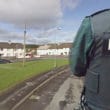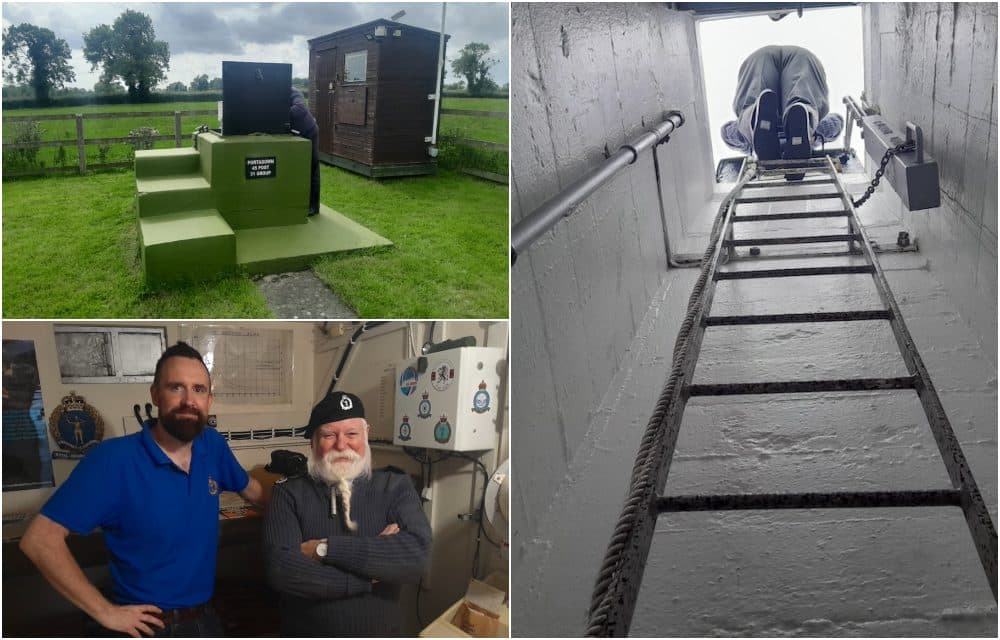
The room is small; yet practical. There is just enough space for a bunk bed, table, cabinet, and two chairs. The walls are adorned with maps, posters entitled ‘PROTECT AND SURVIVE’, and diagrams predicting the blast damage of a ten-megaton nuclear bomb.
“This was exactly what it was like in our day,” says Colin Woods. He’s not wrong. Standing in the nuclear bunker only a few miles outside Portadown, it would be easy to believe that the Cold War had never ended.
Colin first climbed down the narrow shaft leading to the bunker in 1983. Back then, he was the Lead Observer for the Portadown branch of the Royal Observer Corps (ROC).
Established in 1925, the ROC were a civil defence organisation initially responsible for monitoring aircraft flying over the UK. They played a particularly important role during the Second World War, visually tracking Luftwaffe aircraft and providing the RAF and the public with advanced warning of air raids.
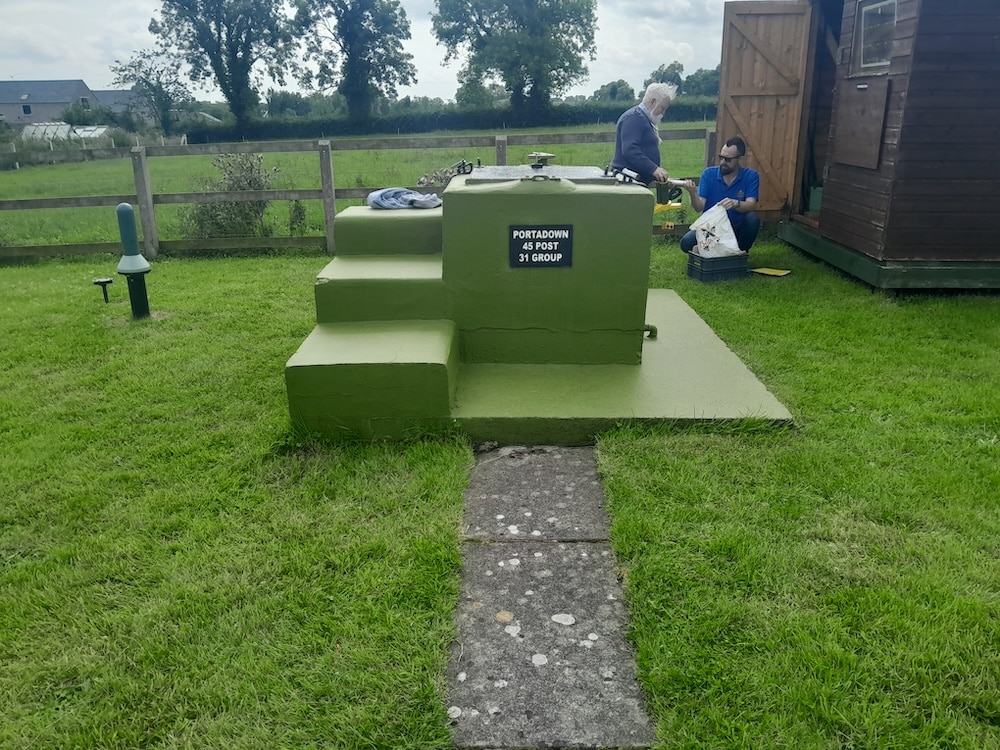
By the end of the war, radar had become so advanced that the visual monitoring of aircraft was no longer required.
For a time, it appeared as though the ROC’s role in national defence had come to an end. Yet the beginning of the Cold War provided the organisation with a new purpose.
In the mid-1950s it was decided that, in the event of a nuclear attack on the UK, the ROC would be responsible for tracking the spread of radioactive fallout across the country.
To protect ROC volunteers from any fallout following an attack, over fifteen-hundred underground nuclear observation posts were built across the UK, with one being built just outside Portadown.
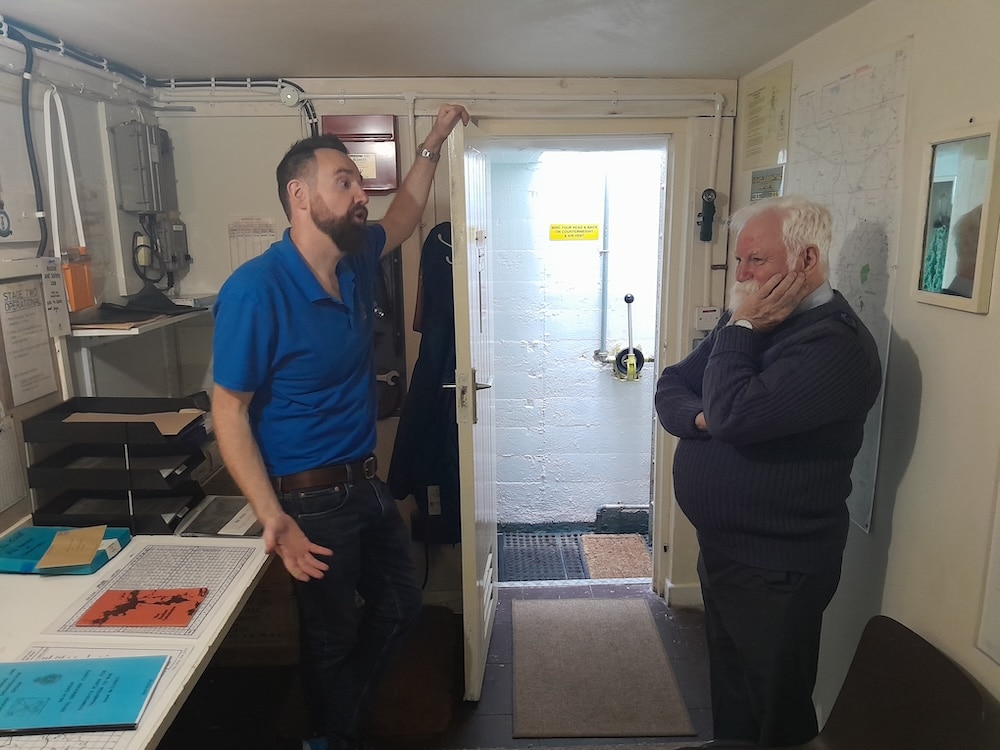
Alistair McCann and Colin Woods in conversation
“It’s fifteen feet underground,” states Colin, “it’s got a really solid concrete wall…and of course then it’s covered with dirt over the top. So the chances of getting hit with radiation down through that depth are really very small.”
The ROC would only fully mobilise in the event of a nuclear attack. And so, throughout his time as Lead Observer at the Portadown Post, Colin and his nine other colleagues were focused on preparing for this possibility.
This meant learning how to use the complicated equipment contained within the bunker as well as taking part in UK-wide training exercises throughout the year. And the volunteers took their jobs seriously, all possessing a ‘grab-bag’ containing food, clothes, and books which they would bring with them to the bunker if a nuclear attack ever occurred.
As Colin recalls, a strike launched by the Soviet Union against the UK “was seen as a very real possibility back in those days…it wasn’t a game.”
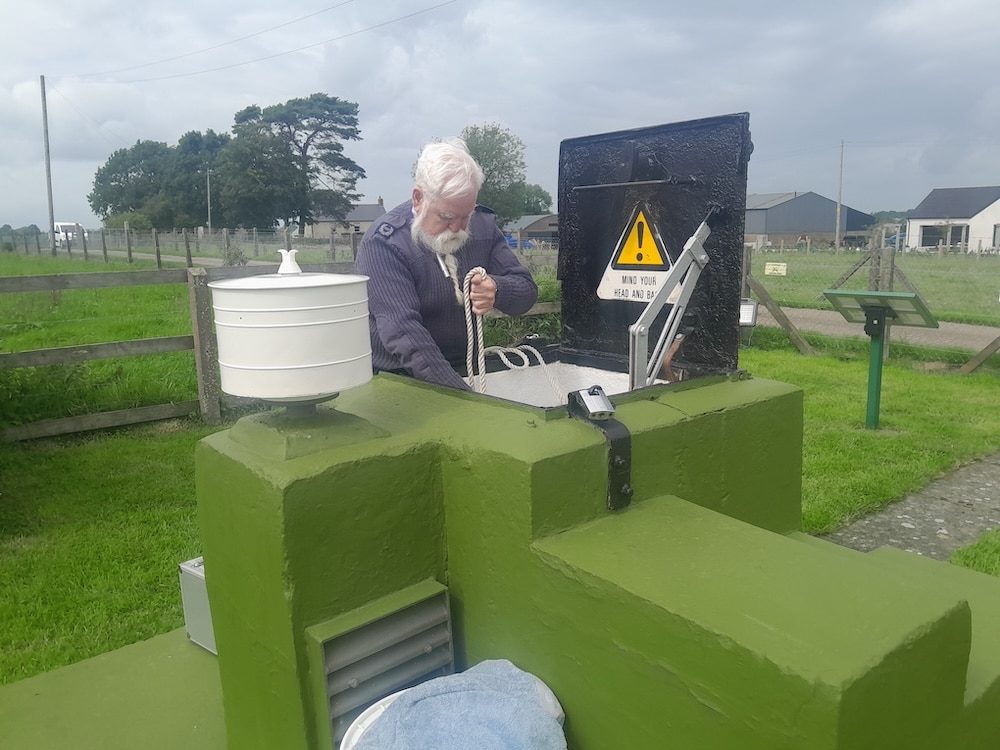
The threat was so real in fact that Colin began having nightmares about nuclear attacks.
“I remember having a nightmare where I’m walking down the streets of Portadown,” he recalls, “and there’s burning stuff floating about and the place is in absolute uproar.”
Yet through volunteering with the ROC, Colin made friends who he remains in touch with to this day. It even led to him meeting his wife, who was a volunteer in the Banbridge ROC Post.
On July 11, 1991, six months after the collapse of the Soviet Union, the government announced that the ROC was to be disbanded as part of cuts to defence spending.
“Every single one of us were gutted,” Colin recalls, “everyone was so disappointed…just overnight we were dropped.”
For almost two decades, the bunker in Portadown was abandoned; a relic of a different age. That is, until Alistair McCann discovered it.
Alistair’s grandfather had been a volunteer with the Observer Corps during the Second World War. In fact, he had witnessed the first Luftwaffe air raid over UK skies on October 16, 1939; tracking the movements of the German Ju 88 bombers and reporting what he saw back to RAF Fighter Command.
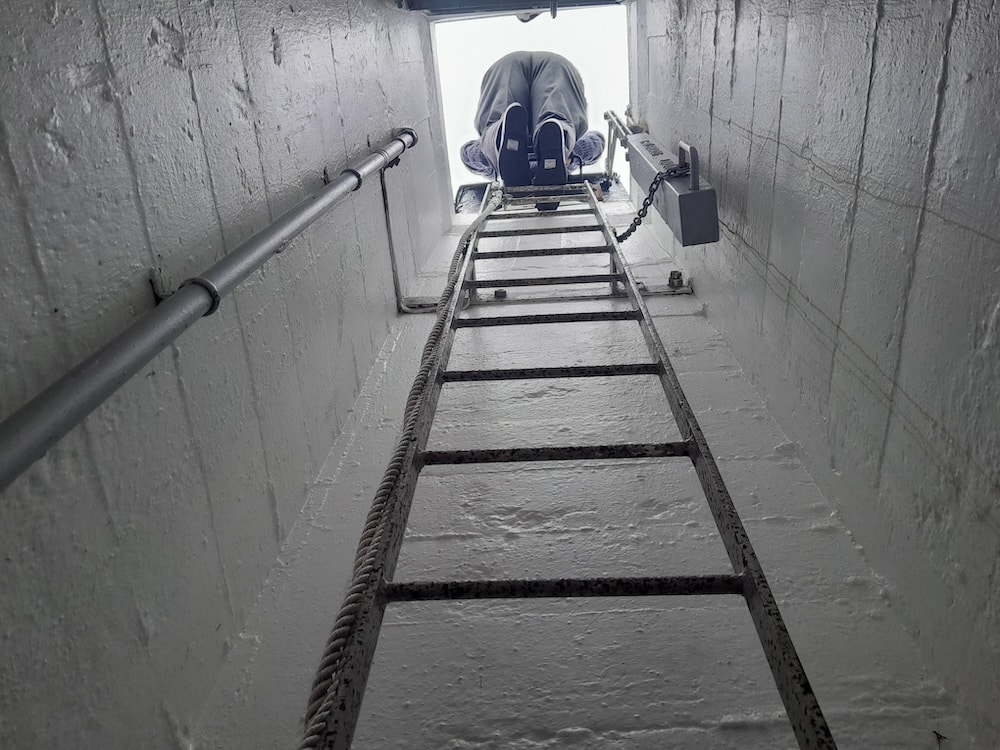
Many years later, Alistair listened as his grandfather regaled him with stories about his days volunteering with the ROC. He also listened as he told him about an abandoned underground nuclear bunker located somewhere in Lurgan; a story which Alistair decided must be made up. It was only after his grandfather’s death that he discovered that what he had been telling him was true.
Researching more about the history of the ROC, Alistair became particularly interested in the role they played during the Cold War. He discovered that the ROC had in fact built a nuclear bunker in Lurgan, but that it had then been replaced by one built near Portadown. Discovering that the Portadown bunker had not yet been destroyed, Alistair decided to renovate it.
Scouring eBay to source the equipment needed to successfully complete the restoration, Alistair quickly built up a prolific catalogue of Cold War era memorabilia.
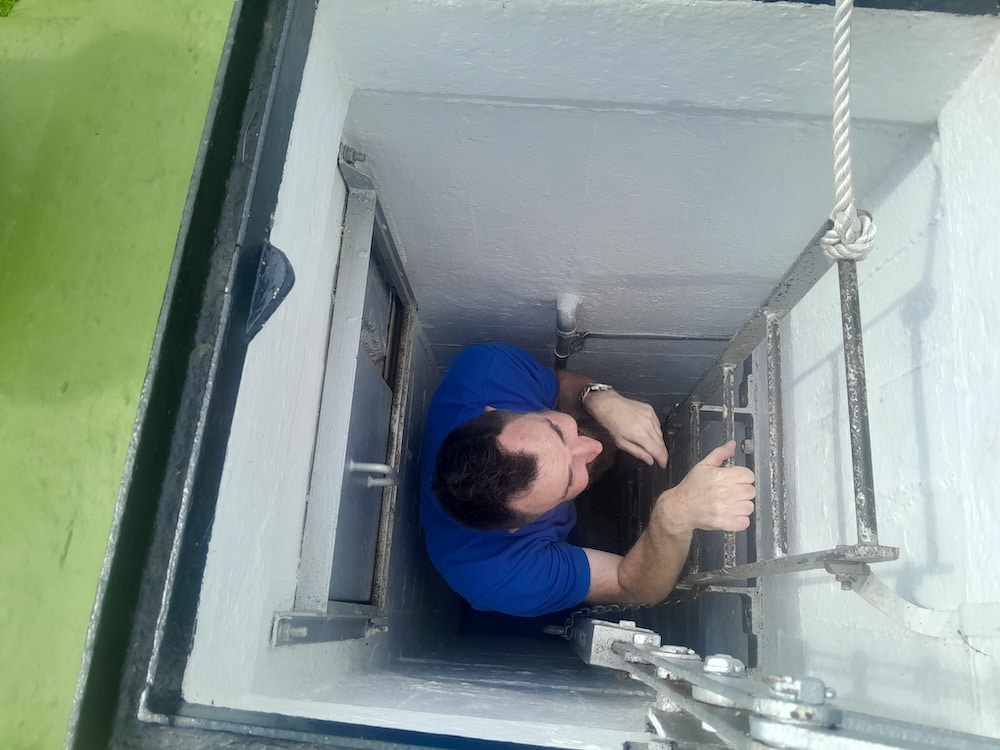
Alistair makes the descent into the bunker
“There isn’t a single piece of equipment used in Northern Ireland (during the Cold War) that I don’t have,” he states, “it has taken over my life…but I like doing it because it’s so much fun.”
Eventually, having restored the bunker to its former glory, Alistair opened it to the public as a free-to-enter museum.
“The Post is 90% exactly how it was,” he says, “all the equipment is original, there’s nothing that’s a replica.”
Spending tens of thousands of his own savings renovating the bunker, his motivation has only ever been to teach people about the history of the local area: “I’ve always had a fascination with history – and this keeps the flame alive.”

